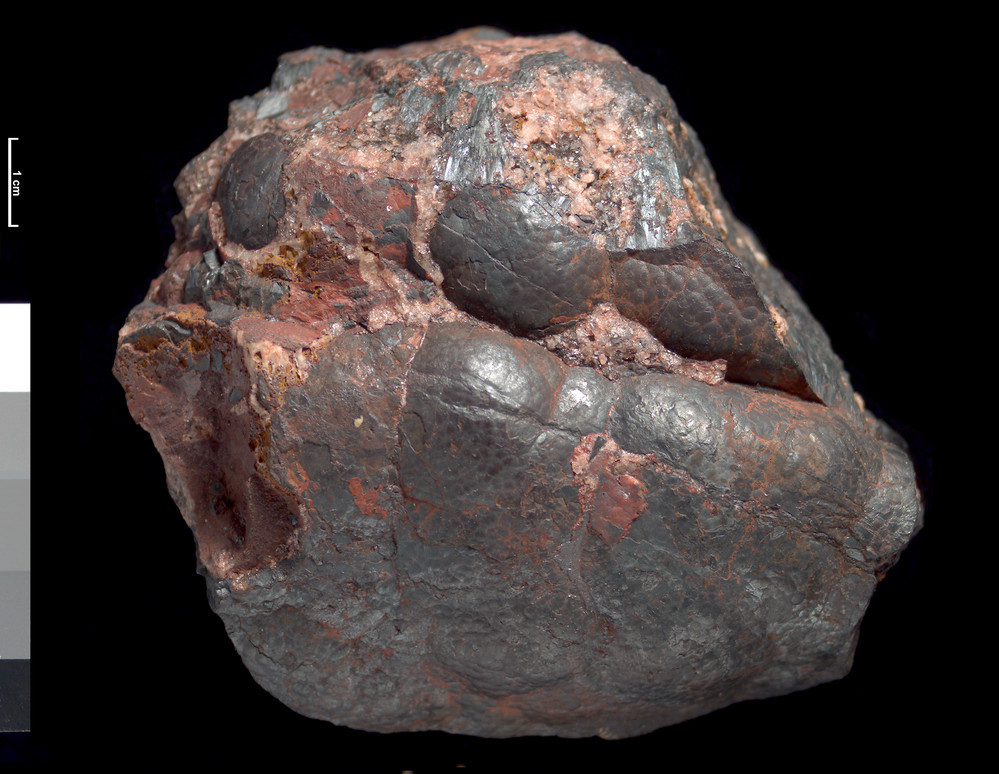| P number: | P521523 |
|---|---|
| Caption: | Mineral specimen of hematite. Garleton Mine, Haddington, East Lothian. |
| Description: | The sample is a massive fragment of solid iron ore, namely the mineral hematite. It occurs here in a form known as reniform, or kidney-shaped. The surface also contains coatings of white calcite, and in places the iron has been altered to produce bright orange secondary iron oxides. British Geological Survey Petrology Collection sample number E 3319A. Hematite (also spelt haematite) is an important ore mineral of iron. It is found widespread in hydrothermal veins and replacements, and in sediments and as accessory mineral in igneous rocks. It can occur in various forms, giving tabula, micaceous, fibrous, granular and reniform crystals. It typically has a red to black, sometimes steel-grey colour, with a strong red-brown streak. It has no cleavage and breaks easily into angular fragments. The Garleton Hematite Mine ceased production in 1876 and is situated near the Hopetoun Monument in the western part of the Garleton Hills. The country rock is trachyte lava and the vein was in the workings for 270 m. along the strike in a north-north-west direction. It was irregular in thickness reaching a maximum of 1.8 m. The ore occupied a well-defined fissure dipping to the east-north-east at 80-90 degrees. The vein thinned to uneconomic proportions at a depth of 85 m. In 1874 the mine produced over 10,000 tons of good quality ore. The specimen is Carboniferous in age. |
| Date taken: | Wed Jan 01 00:00:00 GMT 2003 |
| Photographer: | Unknown |
| Copyright statement: | NERC |
| Orientation: | Landscape |
| Size: | 220.74 KB; 999 x 774 pixels; 85 x 66 mm (print at 300 DPI); 264 x 205 mm (screen at 96 DPI); |
| Average Rating: | Not yet rated |
| Categories: | Best of BGS Images/ Rocks and minerals |
Reviews
There is currently no feedback

